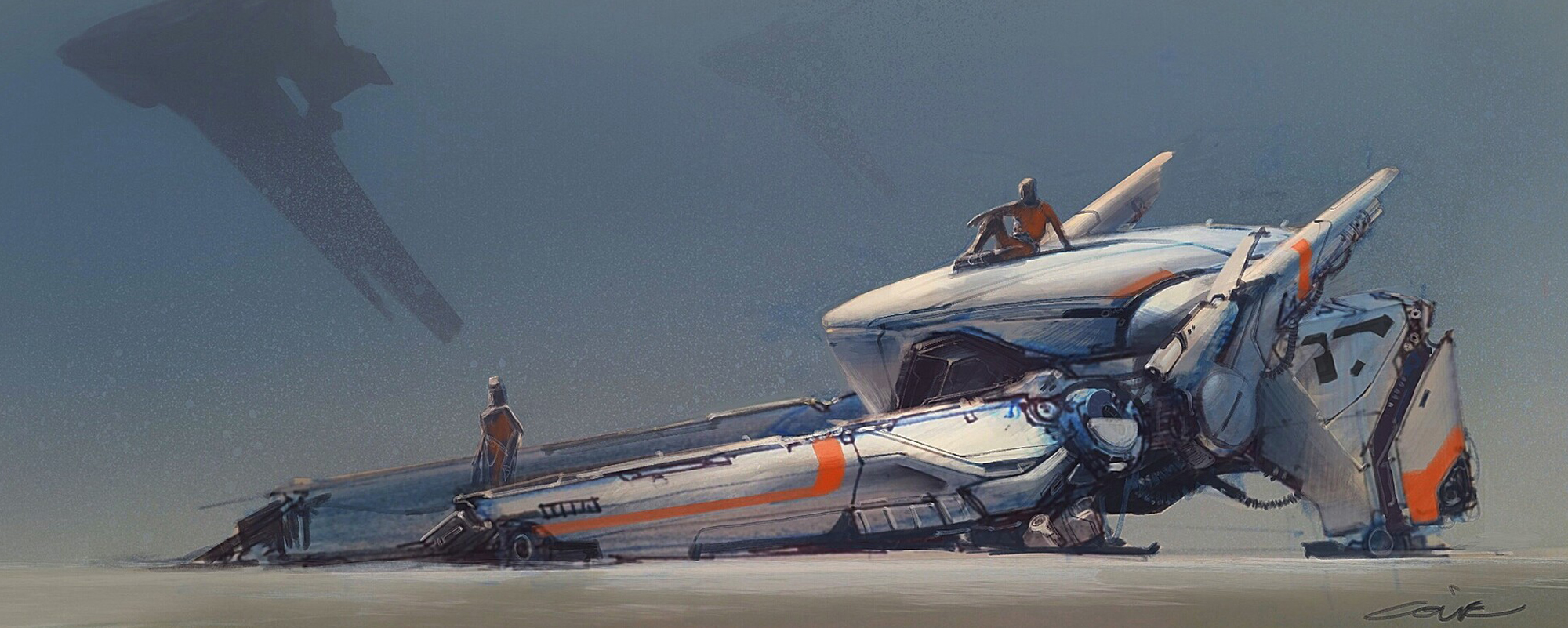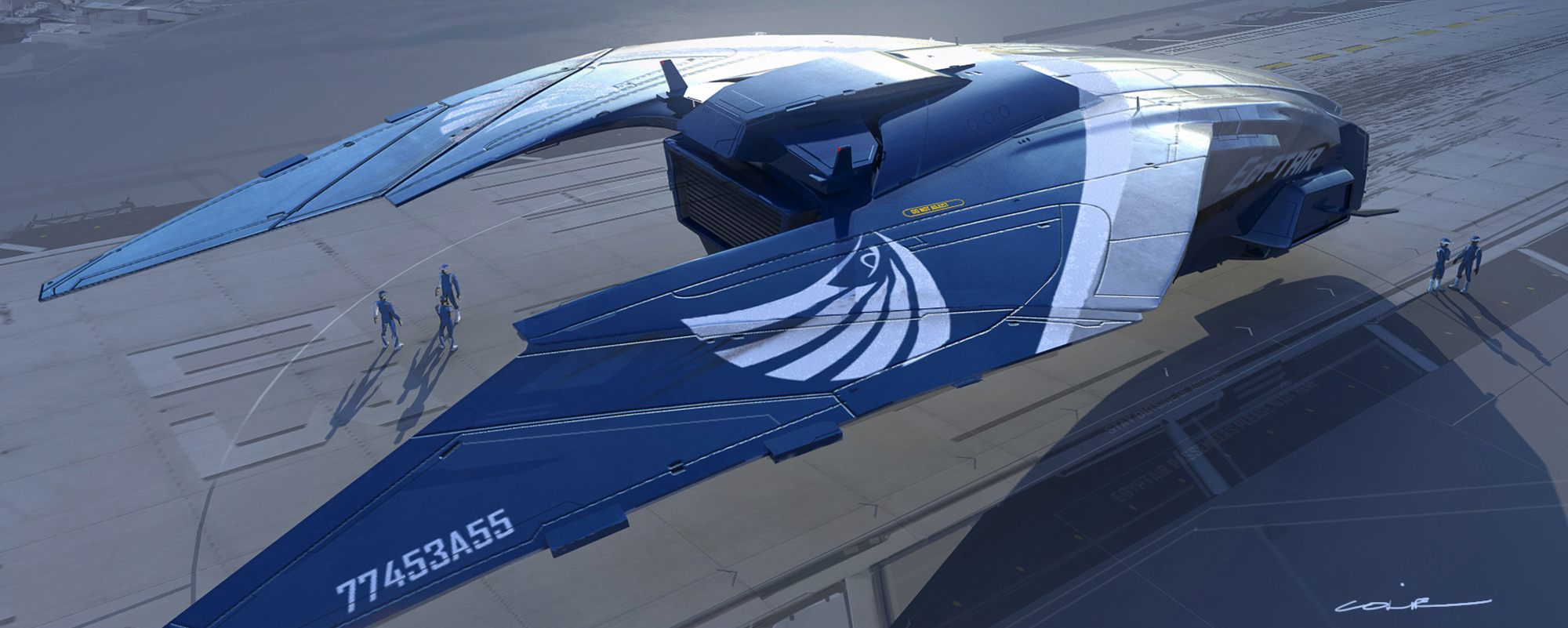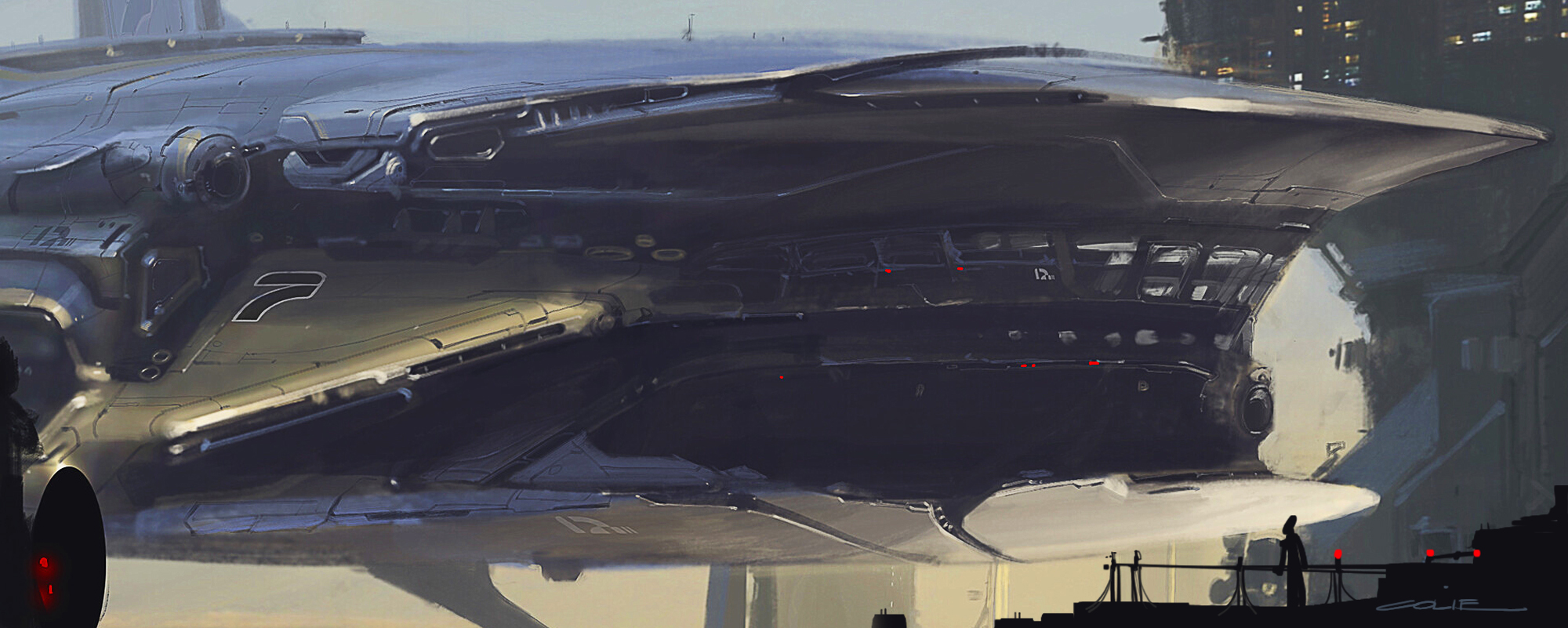
‘Star Wars’ designer goes to new galaxies using MSI Creator PC
A long time ago, in a state very far away from where he lives now, Colie Wertz was about to face his biggest fear: using a computer.
Though he would go on to design sophisticated models for films in the “Star Wars” franchise, “Men in Black” and “Galaxy Quest” – among many, many movies – he got a late introduction to this vital tool of modern technology.
The architecture major graduated from Clemson University in the early ’90s without using a computer, thanks to people who typed his papers for him when his print-perfect penmanship wasn’t enough.
“The notion of actually using a computer to get the same visceral feel of building a model was alien to me,” says Wertz, whose love of models grew from studying airplanes in his family’s World Book Encyclopedias and then later drawing the covers from model kits.
But in the summer after he graduated, he successfully built a model for a new grocery store in Charleston, South Carolina, so his new employer wanted him to do more work and gave him a computer.
“I told them, ‘Oh, we gotta talk,’” he says, explaining his lack of experience with the technology. “It was the first time I used a computer.”
But he hunkered down, learning software called PowerDraw that could import CAD (computer-aided design) drawings on a Mac clone (he thinks it was a PowerComputing machine). But his real breakthrough with technology came later, with a move that would set him up for the rest of his life.
A native of South Carolina, he didn’t consider himself particularly well-traveled, so when a friend proposed a project that would bring him out to the west coast, he jumped at the opportunity, driving cross country. He drove to LA and fell in love with a whole new world of opportunity.
A company needed a multimedia presentation to justify keeping open a facility that was set to close. He had to learn Photoshop, which he realized would be a valuable skill as he moved forward in a career that was veering away from his architectural schooling and more toward movie magic.

Image courtesy of Colie Wertz
He learned how to use one of the very first editions of Photoshop – the first one to have layers – on the PC.
“That was my introduction to the PC. We did all of our programming/multimedia for that presentation on the PC,” Wertz says. “Then I learned about rendering and 3D modeling, which is when the bug bit me – that ‘Oh my God,’ visceral feeling from building something tangibly to building something on the computer.”
He worked with the friend who had invited him in his Pasadena studio, and learned how to model in Form-Z, paint in Photoshop, render in Electric Image and comp in After Effects. It was 1996, so it was a crash course for him, since this was before there were formal programs teaching modeling, painting, rendering and composites on computers.
“It felt like college all over again, the learning experience I was going through,” says Wertz. “In architecture, you build things to stand up. All of a sudden I’m building things on the computer that could blow up and knock down things, with a whole lot less liability.”
The briefs he was given – directives for the models he built – took him back to being a kid again, in the theater watching “Star Wars: A New Hope” for the first time, or drawing airplanes.
“That core love was reignited,” he says. “That’s the beginning of the story of me being able to do what I love – and getting paid to do it.”

Image courtesy of Colie Wertz
It was at about this moment in his life that being at the right place at the right time struck gold for him again, when he entered one of his spaceships in a contest. One of the judges worked for Industrial Light & Magic in San Rafael, California, and liked what he saw with Wertz’s work. He offered him a dream job, from where Wertz would crank out projects over the next decade with the Rebel Mac Unit within ILM.
Among them: the “Return of the Jedi” re-release in 1997, the “Star Wars” prequels, “Men in Black” (and its sequel), “Poseidon” and “Terminator 3: Rise of the Machines.”
He was a generalist who knew how to do everything needed for a shot. He would model, render and composite and then ship it out.
Now he’s got new projects in which he’s using the Gravity Sketch 3D tool – and he’s no longer using Mac clones.
“The VR modeling tools are helping me spatially. I can bang out shapes that I can quickly export as certain file formats that I read directly into renderers on my MSI machine,” he says. “I can spit out a quick idea, do some paintwork.”
MSI, usually known for its gaming devices, has recently made headway into more mainstream spaces with their Prestige series of PCs, with users like Wertz being able to use their laptops to do things they weren’t able to do before on other devices. Wertz has a P65, with up to Intel Core i9 processor, GeForce RTX 2070MAXQ and 4K panel.
His workflow has gotten much faster and more fluid, thanks to that rendering. On a typical day, he sends that quick KeyShot render to his Dropbox and retrieves it on his phone or tablet, after he’s gotten in his car and sipped a cup of coffee at a nearby cafe. He’ll paint over the model and then come back home to mail it to a production designer.

Image courtesy of Colie Wertz
He’s still working on films – including the next iteration of “Dune” – but games are also coming his way. But now, instead of getting concept art from someone else and building models based on sketches, he’s now on the front end doing the concept art.
“I know how to get it done, so while I’m designing it, I’m taking that into consideration because I can take it from idea to completed product,” Wertz says. “I have much more of an appreciation for the front end because of the work I’ve done on the back end, and vice versa.”
Now he hands off to his “old me” who builds the ideas he sketches. One of the most challenging assignments he’s had in his new role was working on the recent “Bumblebee” film, building a big, sophisticated Transformer from the ground up. And one of his most satisfying projects was working on “Galaxy Quest” and building a digital version of the ship on his computer, to help out guys he worshipped – guys who built the intricate physical model ships in the movie. Both of their ships made it into the final cut.
Wertz’s creativity flows a lot from his travels, which include airbases. He takes pictures of the planes’ surfaces and how light behaves on them. He likes to feel them and even smell them – in order to get the full experience.
“You never know what you need to pull from,” he says. “When I was standing next to this thing, I remember this is what it felt like. And if I’m not feeling that when I look at it on the screen, I gotta get back to that.”
While he looks at his works in progress on his computer and mobile screens, he usually doesn’t watch the movies he’s worked on – with the exception of the “Return of the Jedi” re-release, which was the first one he worked on. For him, it’s always about the process, rarely about the finished product.
“Before, I used to hold a model of an airplane, but I didn’t know who designed it. It was just a shape. Now I can come up with something and give it to someone else, the way I would pick up someone else’s design and I can work with them. We build it together,” he says. “It’s that same feeling when the hair on the back of your neck stands up because you’re having a really good time.”
